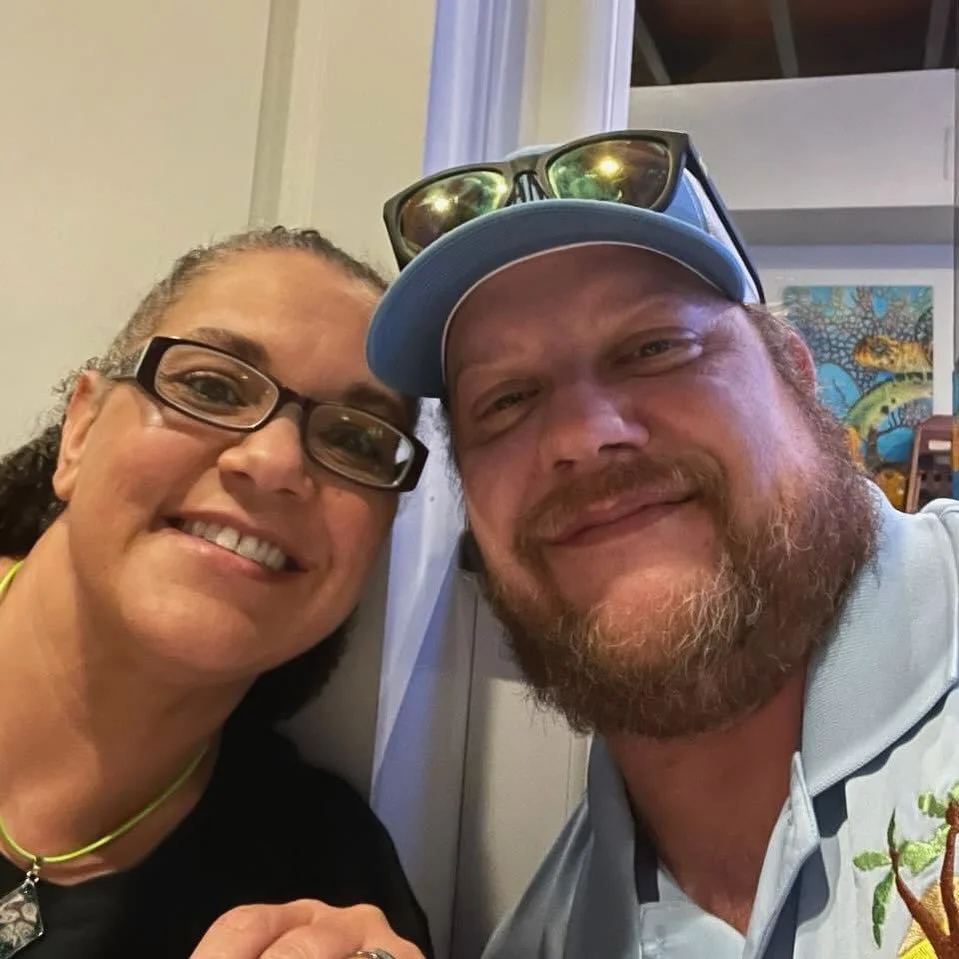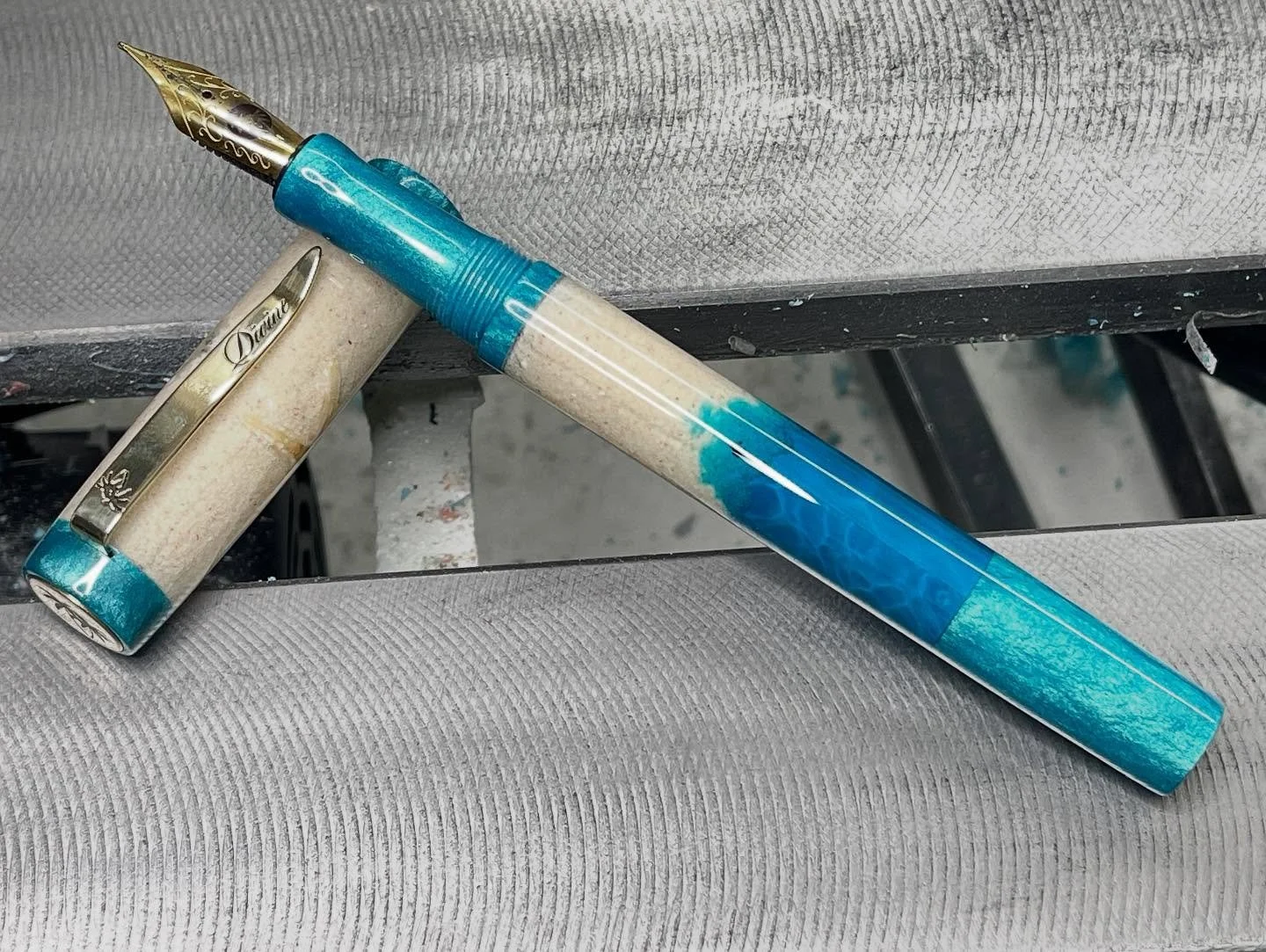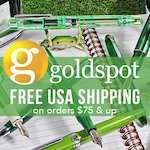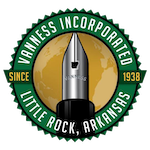(Caroline Foty's first fountain pen was a 1970s Sheaffer No Nonsense that still writes perfectly. Since she discovered pens by independent makers, she wants "one of each, please" and wants to meet all the makers. Maybe you do, too. She lives in Baltimore with pens, cats, and all kinds of fiber arts supplies.)
Some makers start small, getting drawn into the wood crafts with kit pens or small boxes. Braxton Frankenbery came from the other direction. A longtime process analyst for a large telecom company, he had a high-end furniture business on the side. Then one weekend in 2002 he went to a woodworking show near his home in Ohio, and a store rep was giving a demo on making a pen on a wood lathe.
“This got my interest instantly. I stopped at the store on the way home and bought a wood lathe.” Having previous experience with metal lathes and CNC machines, it seemed like familiar territory. He’s made pens ever since.
When his employer moved to a fully telework model, it became possible to relocate to just about anywhere, and the Frankenberys chose the Florida Keys. Divine Island Designs was born. As pens gradually took over the business, the name changed to keep up.
Frankenbery concentrated on the most interesting and high-end kit pens he could find, pushing the limits of the genre by working with proprietary materials made in-house. His wife Erica quit working to become caregiver to her aging mother, and needed a creative hobby for balance. At the time, their son was casting some blanks for pens, and Erica began dabbling with resin, making jewelry. The family had a storefront in the Keys. “It opened right before COVID…” but after two years it was unsustainable and they closed it.
Kit pens proved unsustainable too, from a creative standpoint. Just before COVID, Frankenbery became acquainted with some of the custom pen makers, especially Rich Paul and Jim Hinze, through attending pen turners’ gatherings. At the same time he was getting bored of making kit pens. “It was time to do my own stuff. I love going into the shop and creating whatever I want, not limited by anything like the parts of a kit.”
In Florida, surrounded by beach landscapes, seaside imagery quickly became an important part of Divine Pens’ portfolio. “The Seashore series includes real sand, and little starfish and sand dollars.” Erica designed a pen stand to match the pens, including the blue resin and some of the sand.
Some of the most eye-catching pens in the Divine Pens portfolio are the “watch part” pens, made with actual watch parts cast within clear resin. “Those blanks first became popular for kit pens. You can cast anything around a brass tube.” The blanks alone are nearly $200, even before a maker begins to turn the resin down; the look is a bit steampunk depending upon the type of watch that’s involved.
Both Frankenberys have had health problems recently that prompted them to return to Ohio, but that is not slowing down their business. In addition to pens and accessories, Divine Pens has their own line of blank casting supplies – base colors and colored glitters. Frankenbery has a fiber laser, and makes his own clips, as well as finial coins for a number of makers. He no longer sells his blanks, but he continues to make them for his own pens. “I’m really picky about material. I try to make my pens different from everybody else’s, and being able to do my own resins helps with that.”
Despite making his own materials, Frankenbery is a fan of the work of some other blank makers, notably McKenzie Penworks’ Diamondcast colors. He particularly likes McKenzie’s Oil Slick rainbow colorway. “I’m the father of a transgender child so we’re all about the rainbows.” One of his favorite pens is an Esterbrook Estie made from blue Diamondcast material for the Miami pen show in 2019. “Kenro approached me, but I couldn’t do what they wanted, like making such long rods, so I sent them to Tim McKenzie.” His own first custom pen was made from his Autism Awareness blank by Jim Hinze after they sat beside one another at the Raleigh show that same year. “I never used fountain pens until I started making them, and now I use them all the time. And the thing I love about pen shows is being able to hang out with those guys!”
Like many makers, Frankenbery can think of a pen of his own that got away. “I’m a Corvette guy. We got some fordite from the Corvette plant in Bowling Green, KY, and my son made some fordite blanks. I made a pen from it for myself. I had it on the table at a show, and a guy made me an offer I couldn’t refuse. I still regret selling it!”
That regret is not because he’s lacking other pens. “I have about a hundred pens. A lot of them are kit pens from swaps with friends at pen turners’ gatherings. A lot of them I’ll never use, but it’s a cool collection.” His oldest son went with him to a pen turners’ gathering and got interested so he also has a number of his son’s first pens. “I also have some of my first ones that aren’t worth selling.”
Inspiration and ideas are not lacking. “I have lots of ideas, if I can get to them!” He may see a photo of a pen and like the colors, and try to create his own blank from his pigments. He has some interesting wood in his queue, which will require sleeving and sealing processes and which is intended for this year’s DC show. “I may find something unique for a pen and once I find that I’m really interested. A pen is all about the material, the story.”
An unlikely story to inspire a pen is that famous one about a shark. “I’m a huge Jaws fan. This is the fiftieth anniversary of Jaws so I’m working on a Jaws pen, I’m mulling it over in the back of my head. I’ve made kit pens with shark teeth and vertebrae and I still have some blanks. Could I get some wood from the boat used in the movie??”
If the pen happens, you’ll probably see it online. Frankenbery says, “I’m not a big social media guy. Generally if I have time, I’m making pens. But you really need to market yourself.” He does want to begin doing some videos on TikTok and Instagram to show things off. Technology isn’t going to rule, though. “I know CNC but I like making my pens by hand. My day job is busy. This is my break time.”
Braxton Frankenbery’s work can be seen on his Instagram @divinepensplus, his website Divine Pens Plus, on his Etsy shop, and at shows in DC, Baltimore, Atlanta, Orlando, Raleigh, Miami, and Ohio.
Enjoy reading The Pen Addict? Then consider becoming a member to receive additional weekly content, giveaways, and discounts in The Pen Addict shop. Plus, you support me and the site directly, for which I am very grateful.
Membership starts at just $5/month, with a discounted annual option available. To find out more about membership click here and join us!













